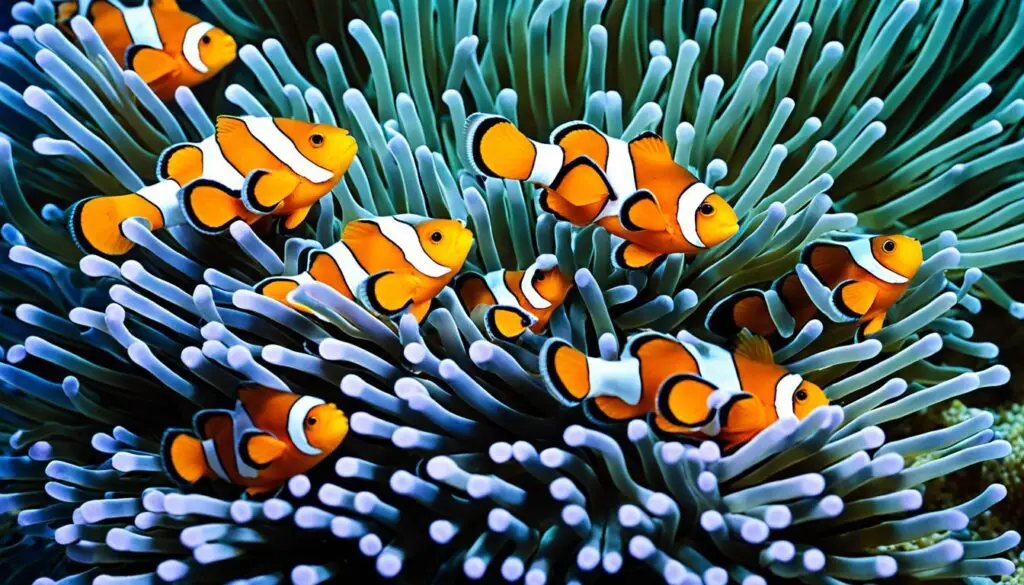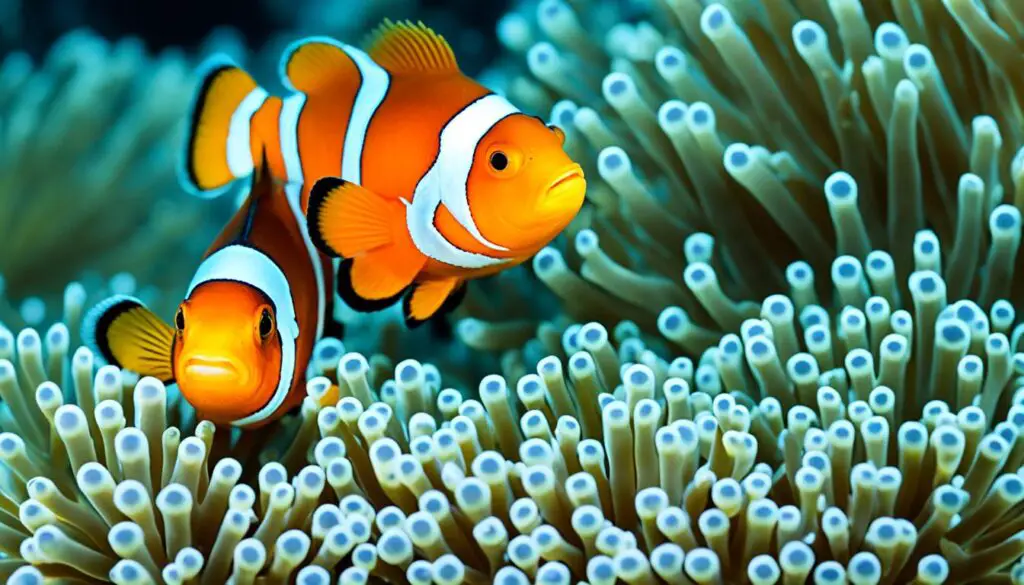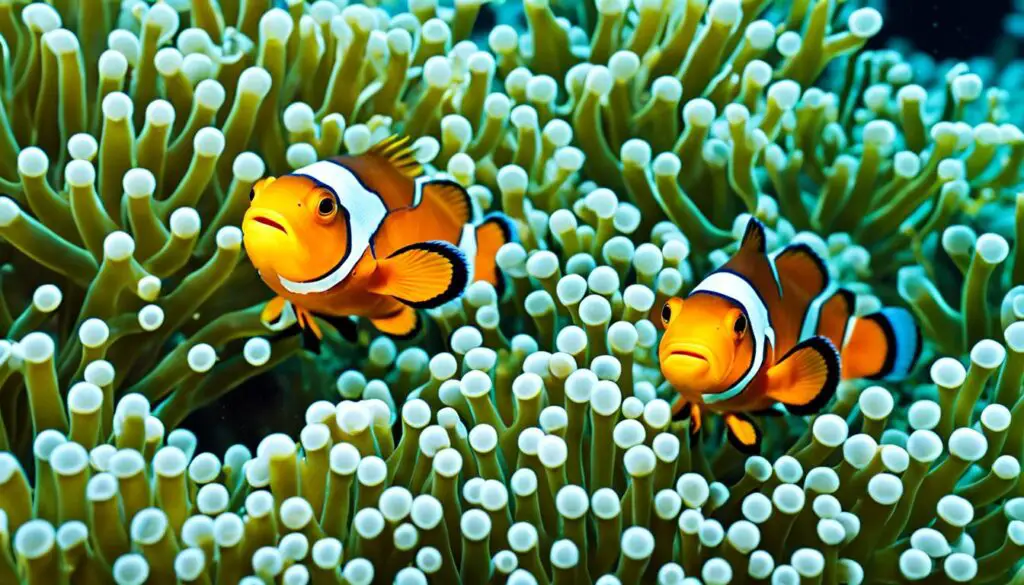Discover the Beauty of Clownfish Tank Plants: A Visual Guide
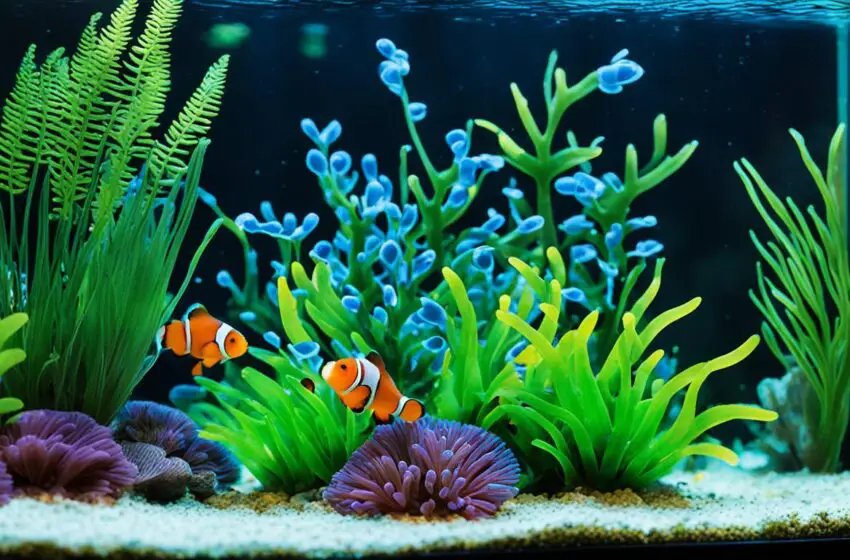
Through working and studying coral reefs, I’ve grown to love clownfish. These brightly colored fish are small but full of character. Did you know there are more than 30 types of clownfish, each with its own special traits? We will look into these fascinating species and help you pick the perfect one for your tank.
Key Takeaways:
- Clownfish are colorful reef inhabitants with distinct personalities.
- There are over 30 identified species of clownfish, each with unique characteristics.
- Understanding clownfish complexes is crucial for selecting the right species for your tank.
The Complexities of Clownfish Complexes – 6 Main Groups.
Clownfish come in six main types, each with unique features. There’s the Skunk Complex, Percula Complex, Maroon Complex, Clarkii Complex, Saddleback Complex, and Tomato Complex.
The Skunk Complex features fish that look like skunks, making tanks fun. The Percula Complex is loved for its bright colors, winning hearts of fans.
In the Maroon Complex, fish have bold band patterns, drawing attention. Want fish that are tough and beautiful? The Clarkii Complex is a great choice.
The Saddleback Complex stands out with the Sebae Clownfish, known for its saddled look. Finally, the Tomato Complex includes simpler, elegant species, perfect for quiet beauty.
Each complex has its own kinds of clownfish. This lets you find the perfect fish for your tank, based on what you like.
No Laughing Matter – Clownfish and Sea Anemones.
Clownfish have a very special bond with sea anemones. This is quite unique in the ocean world. While many sea creatures stay away from anemones because of the stinging, clownfish feel right at home with them. These fish and the anemone help each other out in a very cool way. The Clownfish makes sure the anemone stays clean and safe, but the anemone also protects the Clownfish.
Clownfish can also live without their anemone friends. They might become attached to other things in their tank, like corals. But not just any anemone is good for a clownfish. There are special kinds that make perfect homes for them. These special anemones and the clownfish get along really well.
The Symbiotic Relationship
“The partnership between clownfish and anemones is truly remarkable. The clownfish stay safe from enemies in the anemone’s arms, which have tiny stingers. These stingers would be dangerous to anyone else. But not to the clownfish. The clownfish isn’t just hiding, though. It helps the anemone by bringing food and keeping its home clean and safe. It’s like they always have each other’s backs.”
To keep clownfish and anemones happy in your tank, you need to plan carefully. Make sure the anemones get the right light, water flow, and temperature. The tank needs to run smoothly. This is very important for the health of both the fish and anemones. You have to check the water often, use good filters, and know how to take care of anemones.
Clownfish love their anemones, but not all anemones are right for them. There are certain kinds of anemones that work well with clownfish. For example, the Stichodactyla gigantea or Giant Carpet Anemone. Also, the Entacmaea quadricolor or Bubble Tip Anemone is a great match for clownfish. These anemones create the perfect home for the fish.
If you’re thinking about putting clownfish in your tank, do your homework. Talk to people who know a lot about fish tanks. Follow the advice of those who are experienced. By doing this, you can make a great home for both the fish and the anemones. This will help them live happily together.
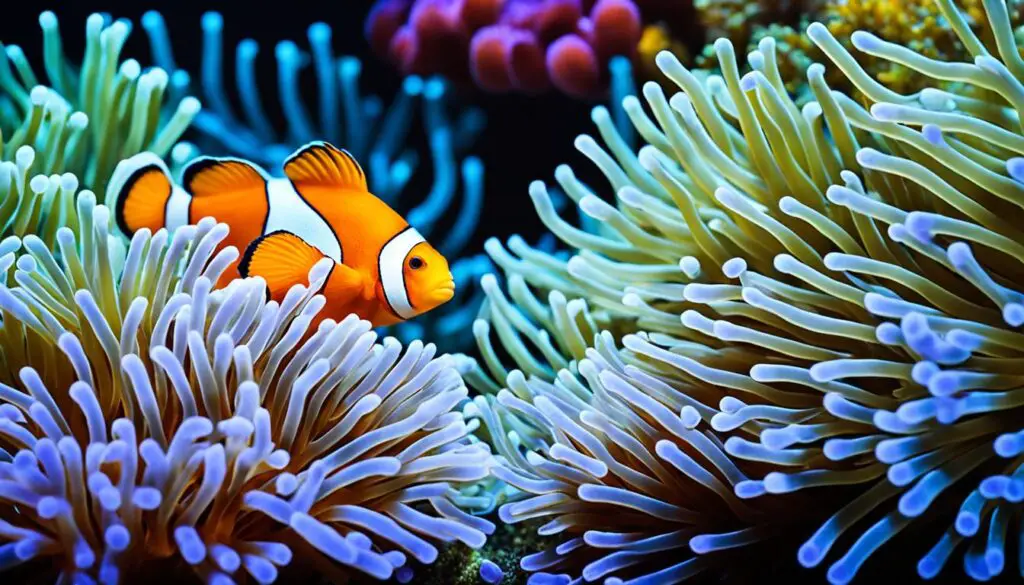
| Anemone Species | Common Name | Recommended for Clownfish |
|---|---|---|
| Stichodactyla gigantea | Giant Carpet Anemone | ✔ |
| Entacmaea quadricolor | Bubble Tip Anemone | ✔ |
| Macrodactyla doreensis | Long Tentacle Anemone | ✔ |
| Heteractis magnifica | Magnificent Sea Anemone | ✔ |
| Heteractis crispa | Sebae Anemone | ✔ |
| Anthopleura elegantissima | Green Anemone | ✖ |
The Captive Clownfish – Facts Every Aquarist Should Know.
When you care for clownfish in captivity, remember a few key points. These fish are interesting because they have unique habits and needs. Understanding them is key to their well-being.
Did you know clownfish can become immune to anemones? They develop this skill by touching the anemone. This contact triggers a protective mucus, allowing clownfish to live in the anemone without harm.
Clownfish can also change from male to female as they grow. This change helps them better manage their groups and reproduce. It’s an amazing feature of these fish.
When you get clownfish for your saltwater tank, choose wisely. Consider things like tank size, water quality, and how well the fish will fit with others. It’s also smart to pick captive-bred ones. They’re known to be hardier than those caught in the wild.
Adding fish in the right order is crucial. A wrong move can cause fights. So, do your homework and plan carefully. This will help keep your tank a happy place.
FAQ
Can clownfish live without anemones in an aquarium?
Yes, clownfish don’t need anemones to survive in an aquarium. They can attach to corals or rock structures.
How do clownfish develop immunity to anemone stings?
Clownfish become immune to anemone stings by gently touching their tentacles. This stimulates a mucus layer that protects them.
Can clownfish change genders?
Clownfish have the unique ability to switch genders. They all start out as males, and some become females if needed.
Should I buy captive-bred clownfish?
Yes, it’s a good idea to choose captive-bred clownfish. They often do better in aquariums compared to wild-caught ones.
What should I consider when adding clownfish to my tank?
Thinking about the order of adding fish can prevent conflicts. It’s vital to pick fish that fit with your tank for their health and happiness.

